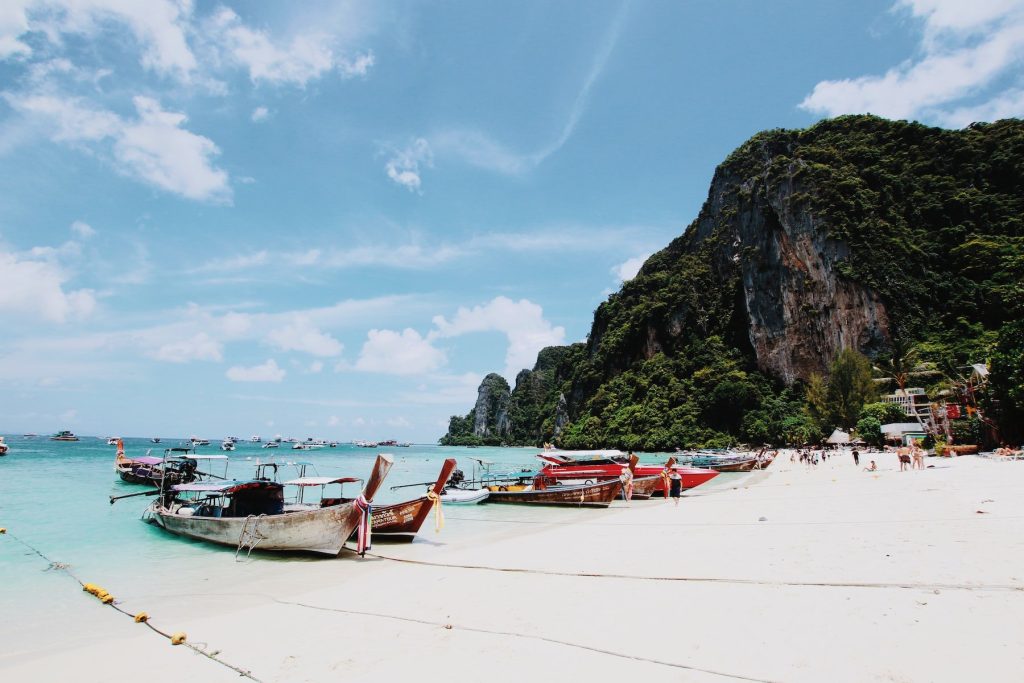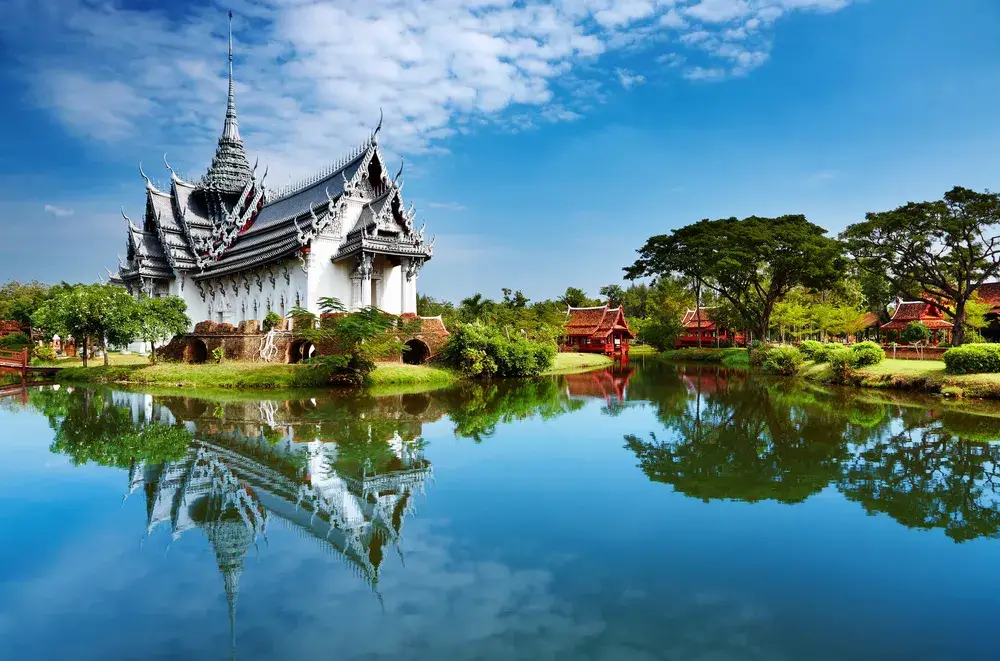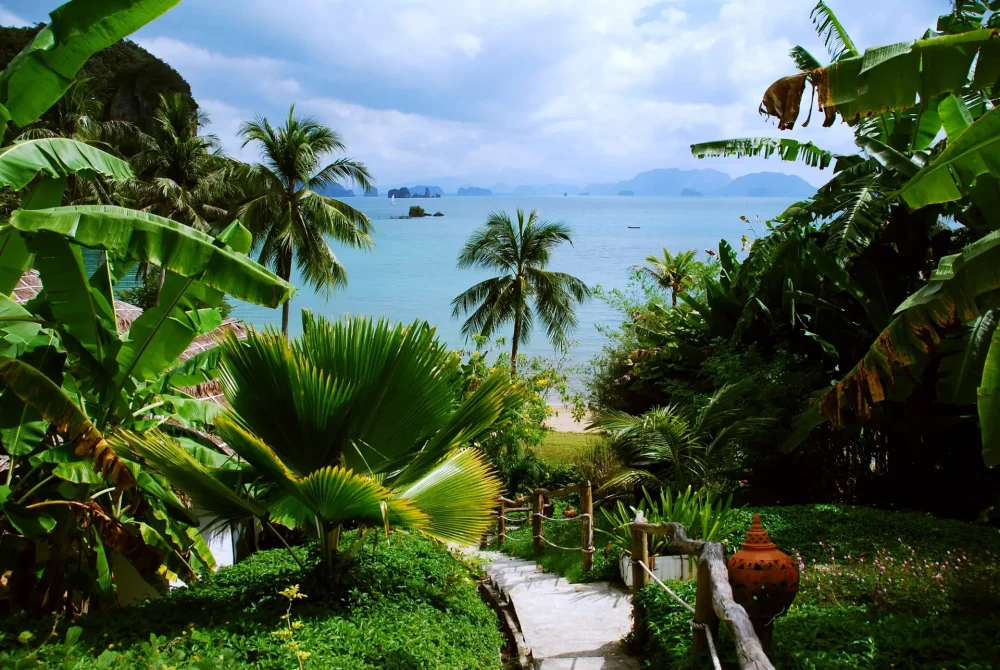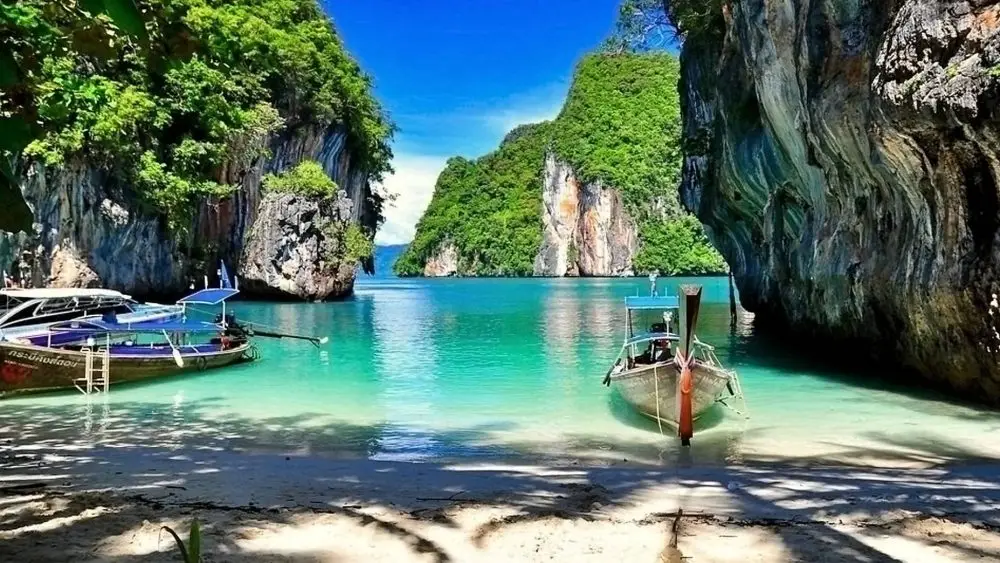The tropical climate does not limit the traveller in the choice of season – it dictates the style of holiday. Some come for the sun, others for adventure or sightseeing. The exact choice of when to go to Thailand depends on your desire: to sunbathe non-stop, catch a wave or go into the jungle. Each month offers a different palette of conditions and therefore a different destination.

Seasonal breakdown: when is the best time to travel to Thailand
When to go to Thailand is not a question of the date on the calendar, but of the purpose of the trip. The country lives according to the rhythm of three natural cycles that shape not only the temperature and humidity, but also the pace of the holiday itself. The climate is divided into dry, hot and humid periods. Each of these dictates how long you should sunbathe, how many days are suitable for sightseeing and how high the price of tickets and hotels will go up.
Winter: high season
 The period from December to February becomes the peak of tourist interest. The air stabilises at +28…+31°C, precipitation is almost non-existent and humidity drops to 50-60%. This gives a feeling of coolness even in bright sunshine. The climate is especially mild on the coasts and islands.
The period from December to February becomes the peak of tourist interest. The air stabilises at +28…+31°C, precipitation is almost non-existent and humidity drops to 50-60%. This gives a feeling of coolness even in bright sunshine. The climate is especially mild on the coasts and islands.
Resorts in Thailand at this time work in full force: hotel staff goes into a strengthened mode, beaches are filled from early morning, sea excursions are sold without stopping. Especially the west coast wins: Phuket, Krabi, Lanta. The sea remains clear, without storms, without algae. Even on the distant islands, the water remains at +28°C.
High season raises prices: the cost of a tour to Thailand increases by 30-50% compared to autumn. Rooms are booked 2-3 months in advance, air tickets disappear from the first days of December. This period is suitable for comfortable beach holidays, weddings, honeymoons, family trips. Tourists from Europe make up the main flow.
Spring: the heat is intensifying
From March, the climate turns hot. The temperature rises to +35…+38°C, higher in the north and centre of the country. Humidity decreases, making the air dry but scorching. For Bangkok and Chiang Mai – an extreme mode: the asphalt heats up to +50°C, buildings give off heat and at night. On the islands, however, the feeling is softened by the sea breeze. Phuket, Ko Lipe, Ko Lanta become salvation: the sea warms up to +30°C, humidity is lower than in summer. At this time, travelling to the mountains is possible, but with caution: the heat causes rapid fatigue.
April is the month of Songkran, the Thai New Year. Water festivals are held all over the country, streets turn into living fountains. Tourists participate in the festivities as much as locals, so this month keeps the flow going even in the heatwave. May becomes borderline: the rainy season begins in some regions. But showers have the character of evening thunderstorms or night storms, and do not interfere with daytime activities. Samui, Pangan and Tao are particularly favourable to visit in May – it’s drier here for longer than in Phuket.
Summer: rainy season
When to go to Thailand in summer – the choice depends on the purpose of the trip. June, July and August are traditionally considered “low season”, but in fact the country remains open for tourism. The air temperature stabilises at +30…+32°C, the water in the sea remains warm – about +28°C. Humidity increases significantly – up to 80-90%. The atmosphere becomes tropical in the literal sense: stuffy, dense and humid.
Rains do not last all day. The most common scenario is a sunny morning, a cloudy afternoon and heavy rain towards evening. Thunder may rumble during the night, but the sun shines again in the morning. This creates a comfortable rhythm: morning swims and excursions, afternoon rest in the hotel, evening walks in the light rain.
Summer becomes the time of favourable tours to Thailand. Air carriers reduce fares by 20-40%, hotels include free services – transfer, massage, excursions. The density of tourists decreases. Beaches, usually filled to capacity, remain almost empty even in popular resorts.
In June and July it is better to go to the east coast: Samui, Pangan, Tao. Here the rains are less frequent, the sea remains calm and the water does not lose its transparency. The weather is favourable for diving, yoga retreats and secluded trips. The west coast (Phuket, Krabi) becomes less predictable – waves rise, storms are possible.
Autumn: a transitional phase before the peak of the season
September and October are considered the most fickle months of the year. During this time, Thailand can welcome travellers with heavy rains, closed beaches and frequent cancellations of sea tours. However, even here a successful holiday is possible – the main thing is to choose the right region.
September brings the maximum amount of precipitation. Humidity reaches a critical 95%, the temperature remains at +29…+31°C, but feels higher. Southern resorts, especially Phuket and Krabi, often suffer from storms. Nature looks fresh and rich: greenery is lush and the air is oxygenated, but there is less tourist activity.
October is a transitional month. Rainfall may persist in the first half, but from mid-month the weather stabilises. Excursions reappear on the southern islands, beaches are cleared and the sea begins to calm down. The resorts come to life. From November the velvet season begins. Humidity drops to 60 per cent, temperatures stay around +29°C and the tourist flow gradually increases. This is an excellent time for a leisurely start of a winter trip: comfort without heat, sea without waves, prices are lower than in December.
Regional specifics: where and when to go to Thailand
Thailand’s climate is not uniform. Regional differences shape not only landscapes and architecture, but also climatic features. Some resorts are better suited for winter, others for summer. To determine when to go to Thailand, it is important to consider not only the month, but also the point on the map.

North of the country: coolness and festivals
Chiang Mai, Chiang Rai, Pai, Lampang – the northern provinces have their own rhythm. The main season is from October to February. During this time the daytime temperature remains within +22…+26°C, at night it drops to +14…+18°C. The air is dry, the sky is clear and the sun is mild. The mountain landscapes are covered in mist at dawn, creating ideal conditions for photo shoots and meditation. The season is particularly popular with European travellers looking for coolness and tranquillity. It is the best time to tour temples, tea plantations, and markets.
In spring, the heat increases with temperatures rising to +35°C. Agriculture begins to prepare for the rainy season, which is accompanied by seasonal fallow in March-April. This worsens visibility and air quality. From June to September, the wet season begins. Landslides are possible in the mountains, trails are eroded and excursions are limited. However, autumn is the season for cultural festivals. Loy Kratong (floating lanterns), harvest festivals and fairs make the north attractive even in the wet season.
Central: the heart of the country and the heat
Bangkok, Ayutthaya, Nonthaburi and surrounding areas are the political, historical and commercial centre. Tourist activity peaks from November to March. The temperature stays around +30…+32°C, humidity is moderate and rainfall is rare. During this period it is easy to visit temples, royal palaces, markets. Excursions are held around the clock, transport works steadily. There are a lot of tourists, especially on New Year holidays.
From April to May Bangkok overheats. The temperature in the shade reaches +38°C, the asphalt heats up to +50°C, the comfort level drops sharply. Even in air-conditioned rooms, heat fatigue is felt. Summer and early autumn (June to September) bring rain. Streets flood, traffic slows down, but the temperature drops to +29…+31°C. This time is ideal for short stops: shopping, evening walks, gastrotourism.
Southern resorts: beach Thailand by season
The south of the country is divided into two directions – west (Andaman Sea) and east (Gulf of Thailand). These areas have opposite seasons:
- West coast: Phuket, Krabi, Lanta, Phi Phi. The best period is from November to April. Water temperature +28…+30°C, air temperature +30°C, almost no rains. Ideal conditions for beach holidays, diving, sea excursions. In May the waves start, the water loses transparency, underwater currents appear.
- East coast: Samui, Pangan, Tao. The resorts keep stable weather from June to October. At this time there is less rain, the sea is calm and the beaches are clean. From January to March, the coast suffers from wind, the sea is stormy, visibility under water is reduced.
How to choose the perfect month to go to Thailand
 The choice of travel time depends on priorities: climate, budget, goals. Universally comfortable period is from November to February. Economical – in the off-season. The most picturesque photos are obtained in December, rich impressions – in February, and solitude – in May.
The choice of travel time depends on priorities: climate, budget, goals. Universally comfortable period is from November to February. Economical – in the off-season. The most picturesque photos are obtained in December, rich impressions – in February, and solitude – in May.
 en
en  ar
ar  de
de  es
es  fr
fr  nl
nl  hi
hi  el
el  it
it  pt
pt 










